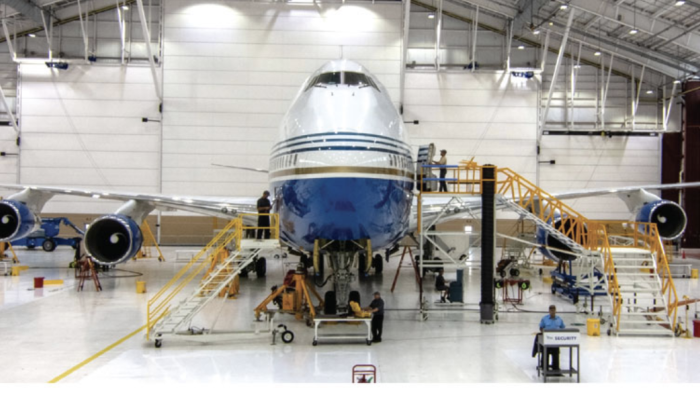Hubbard Aviation Technologies of St. Paul, Minn., last week signed a contract with Aeroshear Aviation Services of Van Nuys, Calif., to fabricate and install engine hush kits for the Rolls-Royce Spey 511-8 engines powering Gulfstream GIIs and GIIIs. Called the QS3, “for quiet Spey engines,” according to Stanley Hubbard, CEO of Hubbard Aviation Technologies and Hubbard Broadcasting, the kits are priced at $2.4 million (installed).
Hubbard Aviation Technologies is showing the first production example of the QS3 Hushkit installed on Hubbard Broadcasting’s 1967 GII (N20H) at the NBAA aircraft static display at Orlando Executive Airport. Bernie Weiss, president of Hubbard Aviation Technologies, estimates that the potential market for Spey hush kits comprises some 330 to 380 GIIs, GIISPs, GIIBs and GIIIs.
Hubbard said his company, over various times, has owned two GIs, two GIIs, two GIIIs, a GIV and a GV, and ended up keeping one GII (N20H, acquired in 1995) and a GIII. “If you can live with a maximum range of 3,600 miles, you can live with a GII or GIII. We always kept a GII because it does everything we need it to do.” He claims the QS3 Hushkit mod on his GII makes it as quiet as a GIV and maintains the GII’s mission capabilities without restrictions. He said his airplane can take off at maximum gross weight with no adjustment to flap setting and no reduction in the takeoff EPR (engine pressure ratio) setting.
“The GIV and G450 are more fuel efficient and cost less per hour to fly than the GII and GII,” Hubbard said. “But if you consider the full cost of these aircraft, including the cost of money and insurance, you will find that it is significantly more economical to own and operate a GII or GIII.”
An increasing number of countries and U.S. airports are imposing curfews and bans on Stage 2 aircraft. In the 1980s and 1990s, several companies saw a market for so-called engine hush kits that had the promise of making originally Stage 2-compliant turbofan engines quiet enough to qualify for Stage III operations. Two companies obtained FAA supplemental type certificates for their products: Miami-based Quiet Technology Aerospace and Stage III Technologies of La Jolla, Calif.
Quiet Technology has obtained eight hush-kit STCs for civil and military transports and the Gulfstream GII/III since starting in 1984. It has installed more than 75 of its kits on Gulfstreams since it received this STC in 2003. The kit for the Gulfstream II/III uses the same translating-ejector design as that of the BAC 1-11 kit, which received certification in 2000.
In February 2008 Stage III Technologies ceased operations after running out of money. When it shut its doors, Stage III’s assets included one nearly complete hush kit, two STCs and three patents. The first four installations, priced at $1.1 million, were scheduled for that year. Hubbard stepped in and bought the STCs and patents. Though Stage III held a 2003 STC for the hush kit and a 2005 STC for a new thrust reverser design for the kit, “the company never got a certified, production hush kit on an airplane,” Hubbard said.
The QS3 Hushkit, which contains no moving parts, includes a 10-lobe mixer nozzle coupled with an acoustically lined ejector and cascade-style thrust reversers that replace the original clamshells. The cascade thrust reversers reduce the amount of engine power needed to provide equivalent reverse thrust. As a result, there is less reverse-thrust noise inside the cabin and externally, lower temperatures, stresses and vibration loads on the engine and reduced vibrations and stress on the empennage.
All maintenance requirements for the QS3 are “on-condition” only. Testing shows that the QS3 Hushkit provides cumulative noise levels (approach, sideline and flyover) that are 6 dB below Stage 3 compliance limits.







